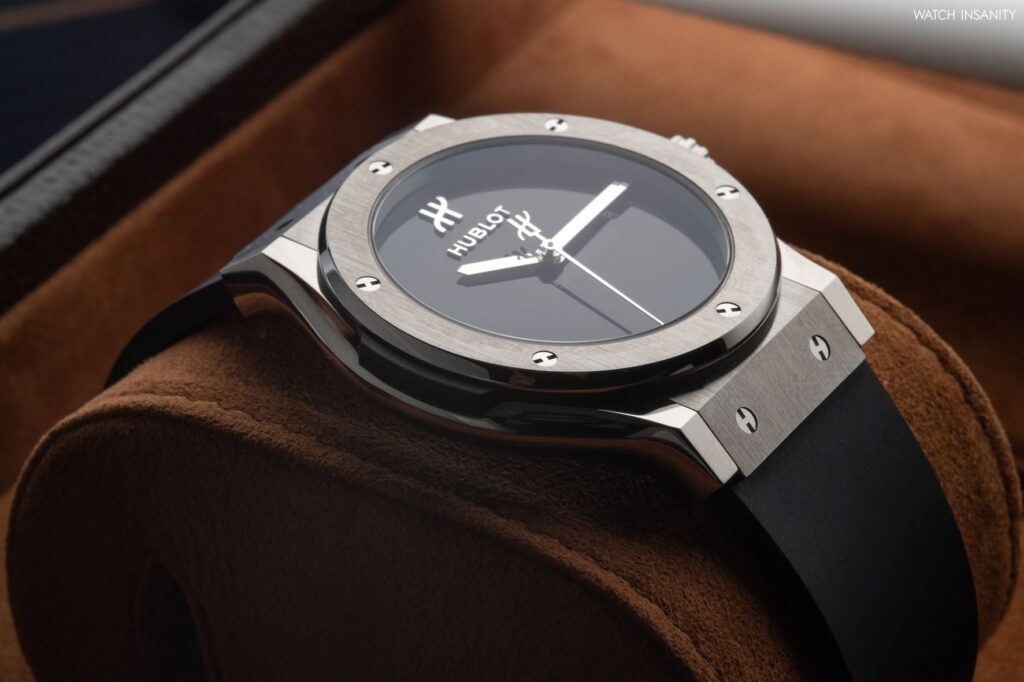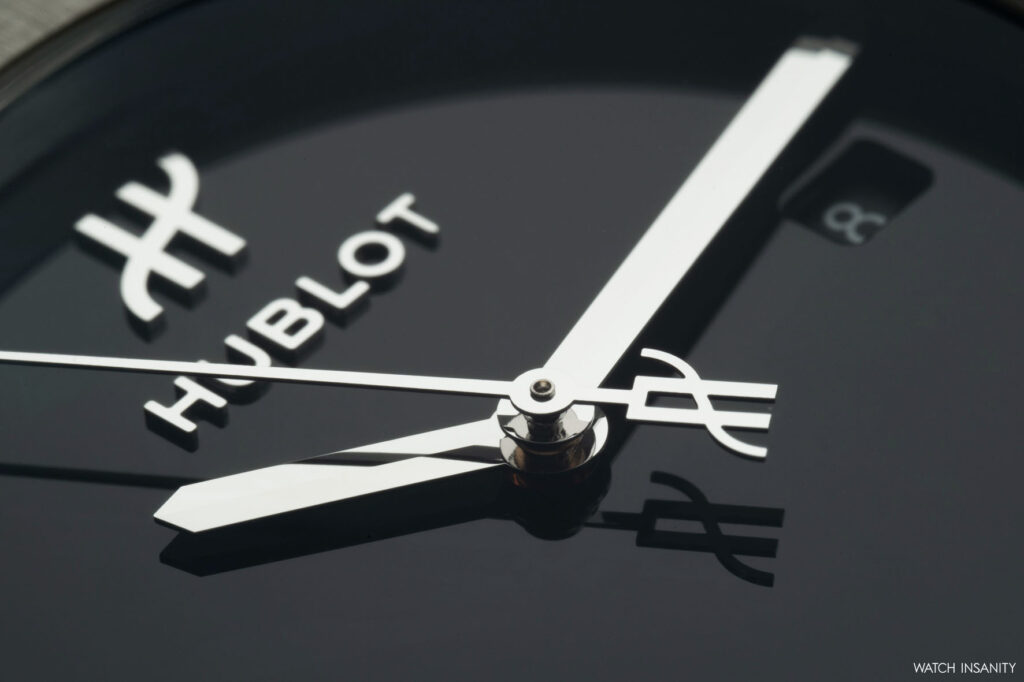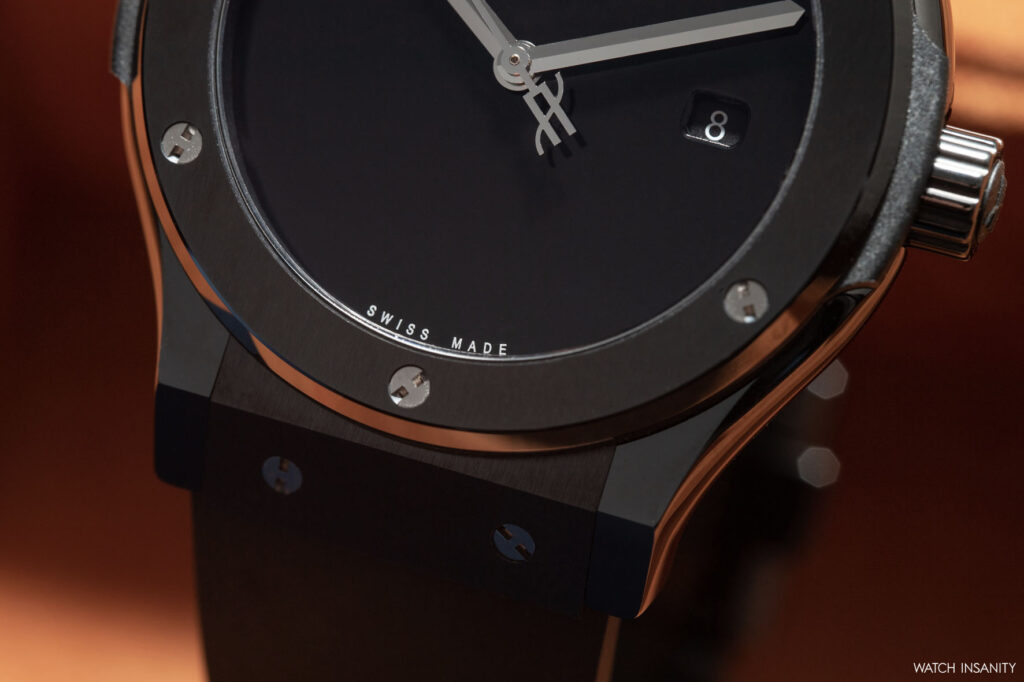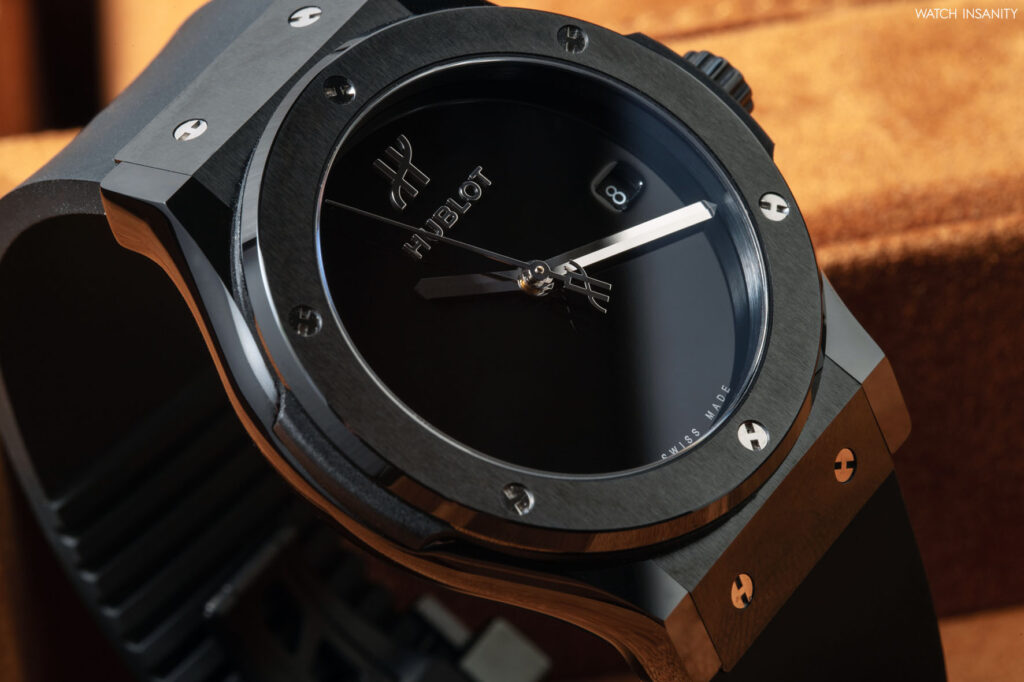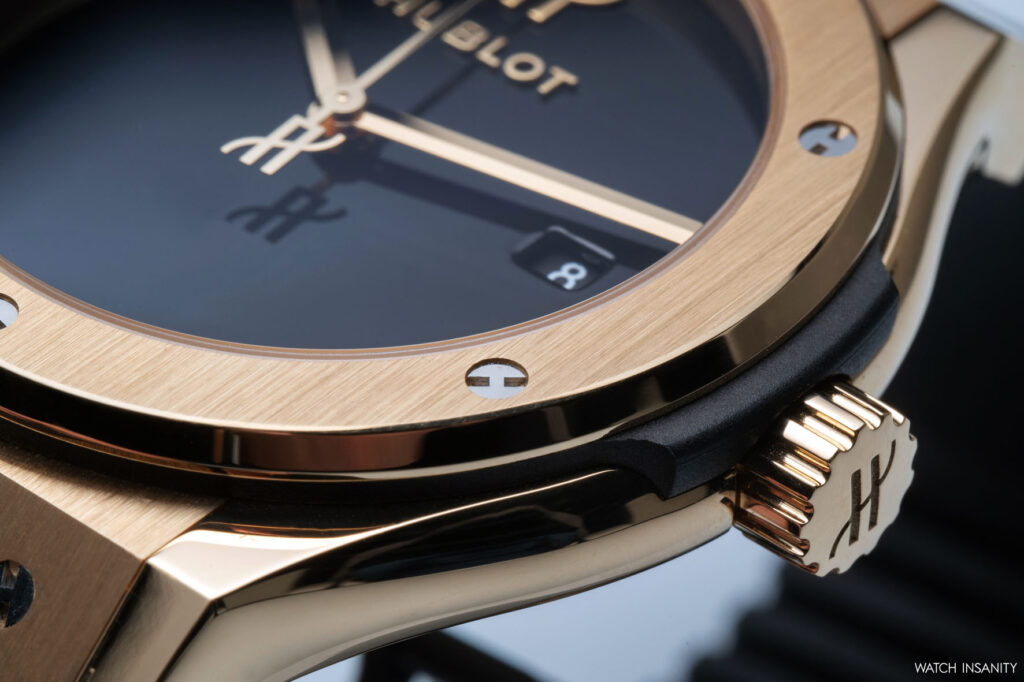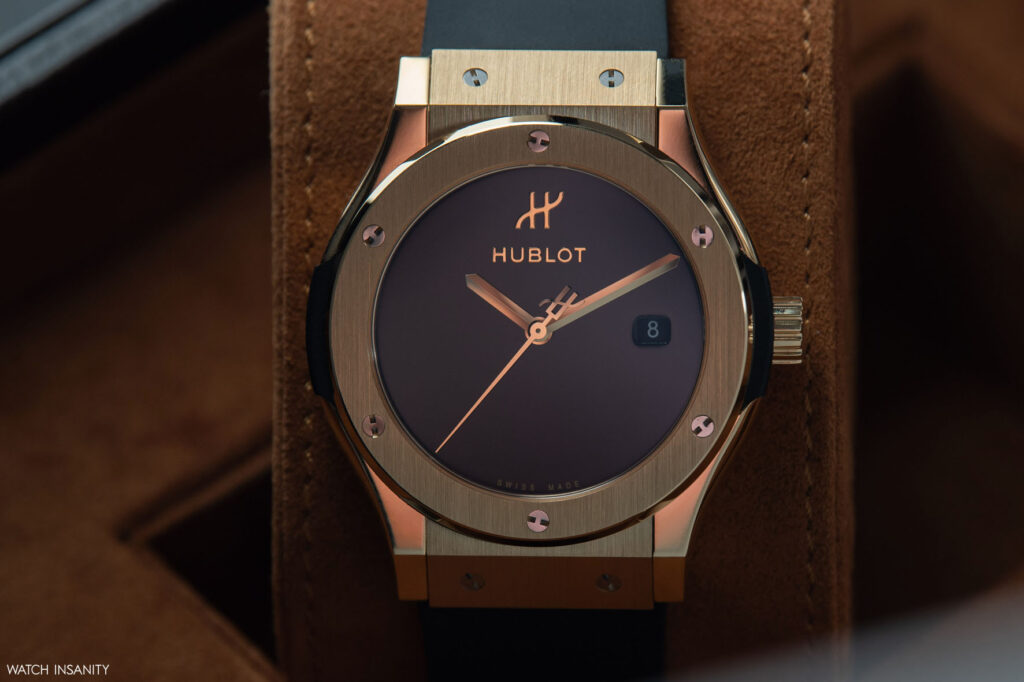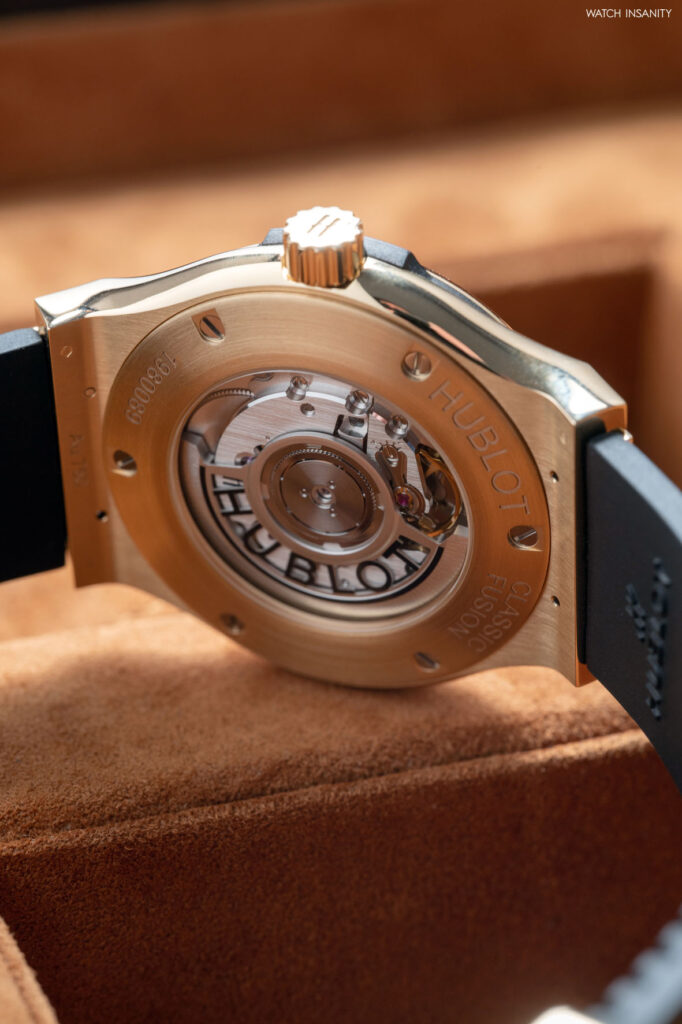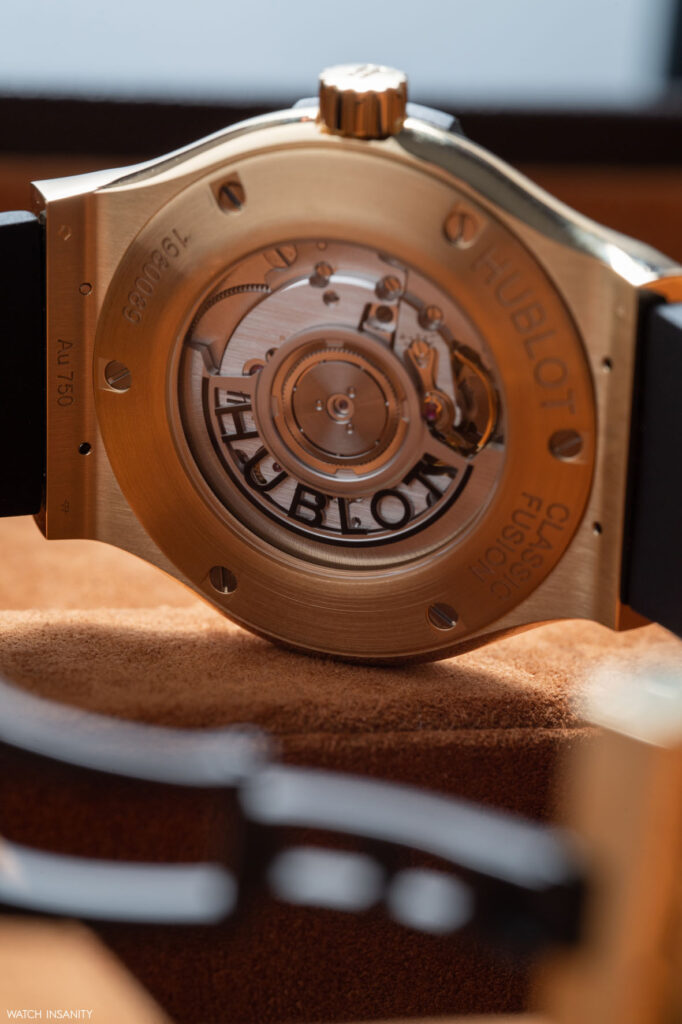Classic Fusion Original: Hublot DNA’s
10 March 2023Albert Camus wrote that “Myths are made for the imagination to breathe life into them.” Perhaps, in watchmaking, this statement could be turned around because it is the myths of the watches that breathe life into the enthusiasts’ imagination. Hublot’s Classic Original – which celebrated its first 42 years in 2022 – belongs among these myths.
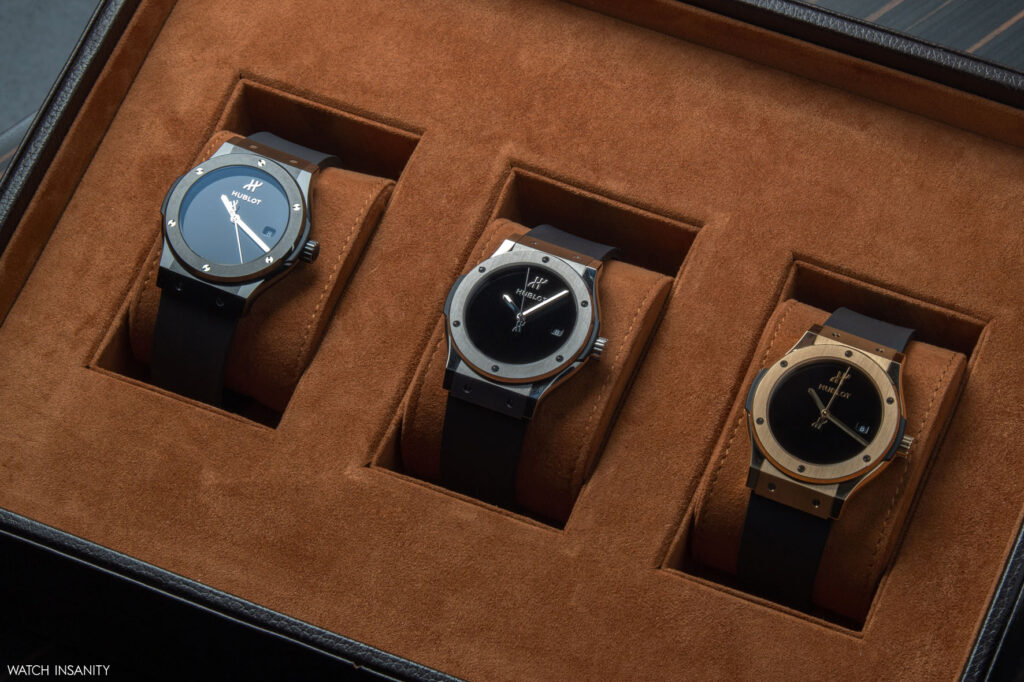
This watch has a beautiful story behind it, which we have retraced in other articles and which is always interesting to read again. The Classic Original has been able to keep its identity intact over the years, despite having adapted to the evolution of mechanical technology and that of materials. Born in the quartz era, at the dawn of the hedonistic 80s, it then embraced mechanics and has never separated from it since then.
HUBLOT AND THE ART OF FUSION
If we talk about Hublot, evolution is a key concept in the history of the manufacture. It is one of the most advanced when it comes to innovative materials research and their integration within advanced production and industrial processes. For this reason, the new Classic Fusion Original collection can be taken as an example of Hublot’s ability to be and work ahead of the times.
Already from the name, the collection contains the whole story of the first, great success of the brand. The Classic Original was born in 1980 from an idea by Carlo Crocco, and was a declaration of intent: Classic, because it was part of a watchmaking tradition made of care in the workmanship, finishes and choice of the most precious materials; Original, because the quartz movement and the rubber strap (combined with the yellow gold of the case) were revolutionary elements, however blending with watchmaking’s classicism in the best possible way.
Classic Fusion Original by Hublot recalls all of this, incorporating the concept of fusion, so dear to the brand that it becomes its own pay-off (The Art of Fusion) and is included in one of the most successful collections, the Classic Fusion. This collection is the final seal on the path started by Crocco, in which gold and rubber didn’t represent two irreconcilable elements, like water and oil, but blended perfectly in an innovative and tasty mix.
CLASSIC FUSION ORIGINAL: THE MATERIALS
Today the Classic Fusion Original collection includes 9 watches: three case sizes for as many materials composing them. A strategy that aims to make the timepiece attractive to different groups of enthusiasts, and which enriches the brand’s offer in a field, that of sporty-chic watches, which is always state-of-the-art.
The materials of the new Classic Fusion Originals’ cases have now become traditional for Hublot. Starting with grade 5 titanium, a material the brand uses extensively, especially for its lightness. It has the best strength-to-weight ratio of any material, making it extremely popular especially in aeronautics, as well as watchmaking.
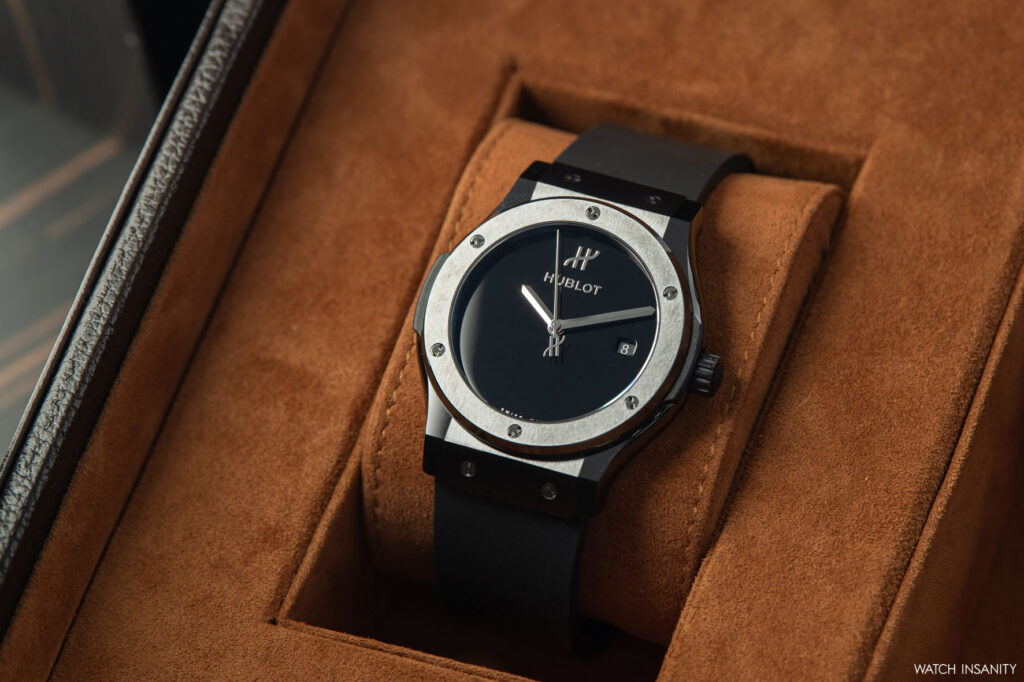
It also stands out for its resistance to corrosion and for being hypoallergenic. Hublot uses only high-quality grade 5 titanium, the strongest. When polished, this material retains a slightly bluish metallic sheen. Polishing titanium is not a simple operation, because it catches on fire very easily: this is why only few manufacturers, including Hublot, have the right expertise to work it in the best possible way.
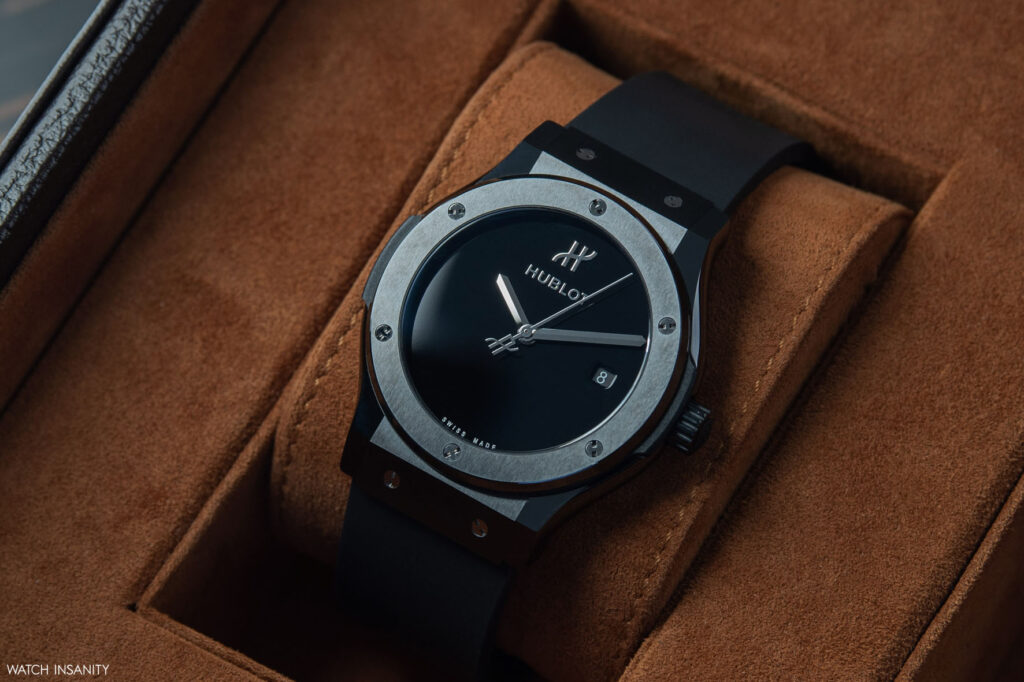
Then there is the high-tech ceramic. For Hublot, materials are an integral part of a watch’s design. They have to complement it, while protecting the movement and standing the passing of time. This is why on the Classic Fusion Original, in the Black Magic version, the manufacture uses black high-tech ceramic for the bezel and case, an ultra-resistant and almost entirely scratch-resistant material, based on zirconium sintered at very high temperatures.
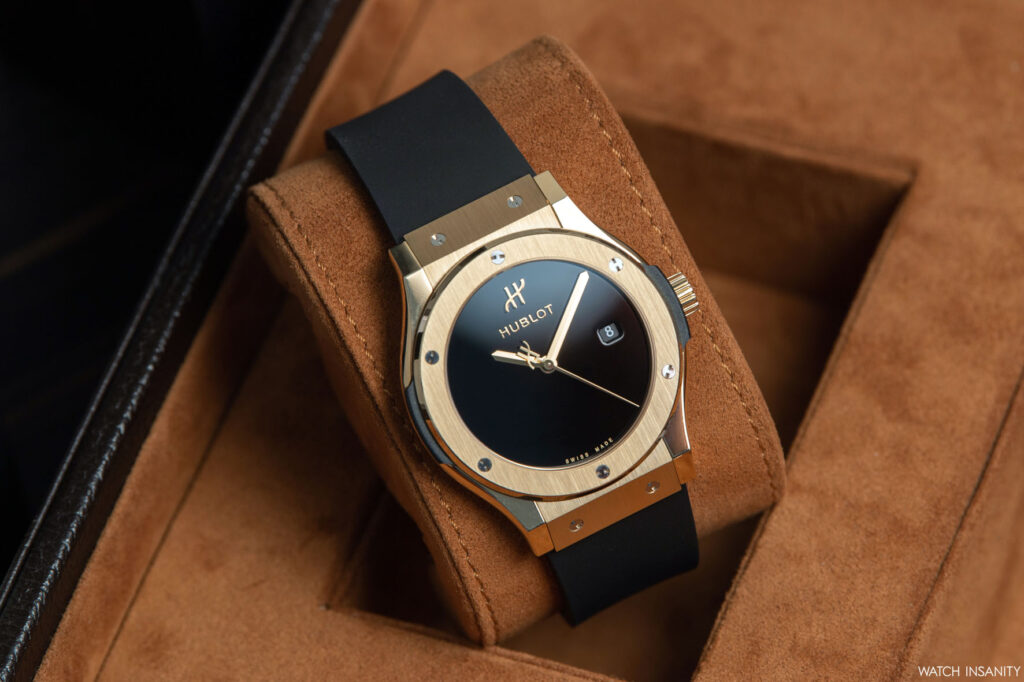
Finally, the 18-karat yellow gold, which in this collection is the most obvious tribute to the Classic Original of the beginnings. A material whose combination with the rubber strap exudes elegance and sportiness even today, more than forty years after it was launched on the market.
The unique tone of gold used by Hublot and the alternation of satin and glossy finishes between the case, bezel and lugs makes the contrast with the black of the strap and dial even more vivid, and gives the timepiece a strong and determined character.
CLASSIC FUSION ORIGINAL: THE SIZES
We have talked about three materials, and three case sizes. They go from 33 to 38 to 42 mm, in a crescendo of sizes for almost every type of enthusiast. The smallest size, designed for female wrists, is the one that most closely pays homage to the 1980 model: same diameter and quartz movement, enclosed in the case and protected both by a sapphire crystal with anti-reflection treatment and by a beautiful shiny dial.
The same dial can be found on the references with 38 and 42 mm cases, which however house the automatic manufacture movement MHUB1110: a caliber with 28,800 vibrations/hour and 42 hours of power reserve, developed by Hublot on the Sellita SW300-1 a. A reliable, durable and precise caliber.
THE IMPORTANCE OF THE STRAP, AND THE WATCHES’ PRICES
The strap of the Classic Fusion Original takes on the importance that we all well know. Hublot has chosen to make it smooth, despite the fact that most of the straps in its assortment are striped. The reason is obvious, given that the strap of the Classic Original from the 80s was smooth…
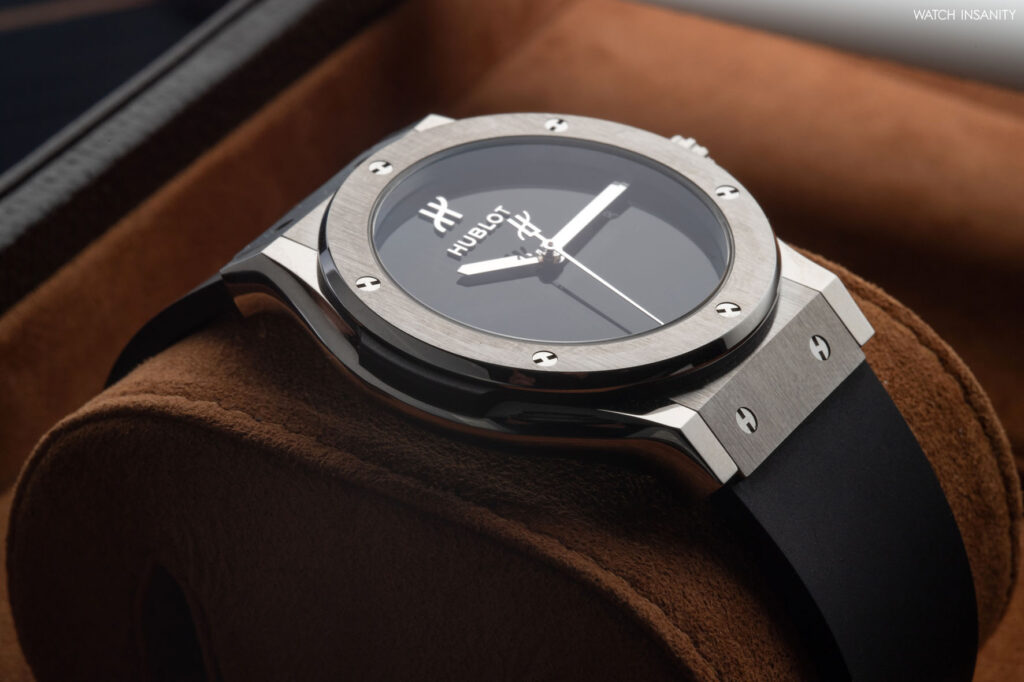
Just as the latter was equipped with a folding clasp, so is the Classic Fusion Original. Titanium, yellow gold and black ceramic are the materials of the buckle matching those of the case.
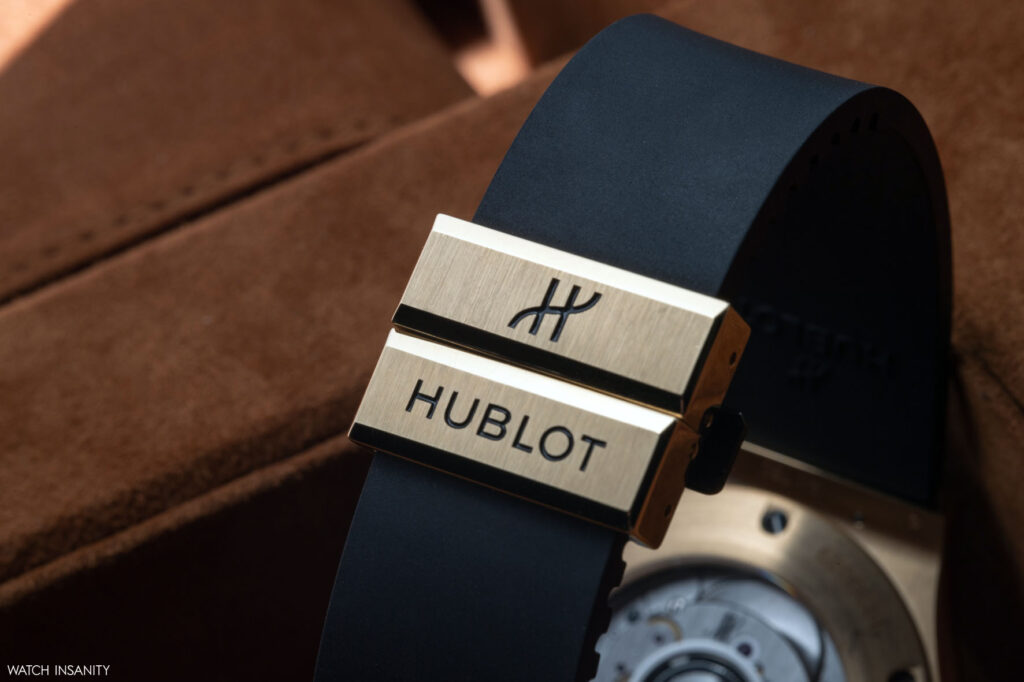
Lastly, let’s talk about prices, which vary according to the size and material. The 33 mm costs 6,800 euros in the titanium version, 7,600 in the ceramic one and 18,600 in the gold one. The 38 mm comes out on the market at 8,200, 8,900 and 21,400 euros respectively. The 42 mm has retail prices of 8,600, 10,400 and 25,200 euros according to the material. This scale of prices can satisfy different enthusiasts willing to put on their wrist a legend that can breathe life into their imagination. While reading – why not? – a book by Camus.
By Davide Passoni

